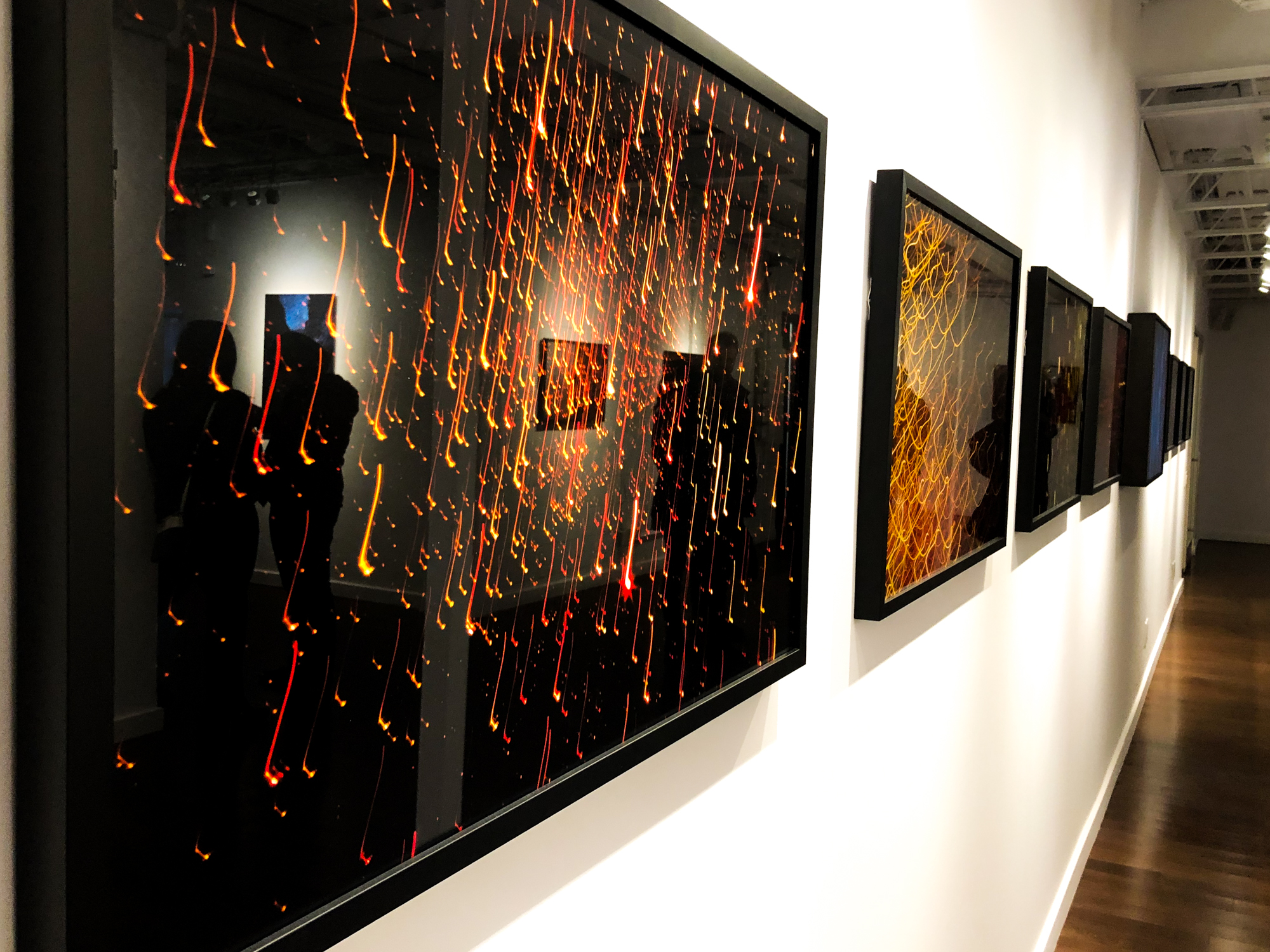Kiran Abwani uses fibre optic lights to create work that glows
Kiran Abwani’s lightboxes are displayed on four walls within the first room beyond the entry of Never Apart gallery. This creative space is 1,200 square feet dedicated to the mission of “ending separation and igniting positive change and unity through culture,” as indicated on its website. The Centre focuses on conscious living by breaking down barriers of separation in society through music, art, panel discussions, and other events.
The first thing I noticed in the exhibit was how strongly my eyes were drawn around the room as line and colour created a rhythm across the entirety of the work. Movement and intensity of hues create a visual theme as you make your way around the installation. Abwani uses black wood framing around the lightboxes, which offers a simple yet reliable structure to the pieces.
Each work glows through the transparent acrylic and puts forth a subtle radiance in the space of the gallery. A focal point among each piece is evident, although some of the works portray this stronger than others. It is the light streaks within each work that draw the eye to these focal points.
Making my way through the exhibit, I was fortunate enough to see that Abwani was at the gallery showing her work to family members. I had a brief chance to speak to her. She said that this work is unusual for her, as her typical photography style is documentary in nature. With this series, she wanted to branch out and try something new.
As a photographer myself, I understand the exploration of light as a fascinating endeavour, and she indicated her interest in this type of investigation. Abwani created the images through long exposure photography using the movement of colourful fibre optic lights and mirrors. Light trails create the patterns and lines that we see shining through the transparent acrylic.
The artist explained the strong attraction towards experimentation in her light work and the uniqueness of each piece. No two pieces will ever be exactly alike, she explained. Each artwork shows an inherent presentation of spontaneity. Some images take on smooth, soft waves in blues and greens alongside more frantic and aggressive red and orange bolts of glowing lines. The vibrancy of colour ties the work together.
With titles like Dancing Sparks, Big Bang and Galactic Trip, an inherent theme of space and time is discernible not only from her words but also the aesthetics of the work. Although the series has unity and cohesion as a whole, the piece Infinite Light hangs on its own wall and appears to flash subtly, making the reddish-orange orb in the middle of the composition jump out at the viewer.
This work appears as the anchor for the show and I find myself continually drawn to it.
“As a visual storyteller, I aim to capture moments & experiences and to visually share these instances, perspectives and stories with my audience,” said Abwani in her artist statement. “Creating a connection with my audience is essential in my artistic practice, and with this series, I invite viewers to participate in the experience.”
The stories and connections are bold and symbolic in Kiran Abwani’s series, an experience that leaves the viewer with a fascination and inclination to look beyond the light and into the stories of the artworks.
Infinite Light is on view at Never Apart on Saturdays from 12 p.m. to 5 p.m. until Jan. 4, 2020.
Photos by Shannon Roy.
